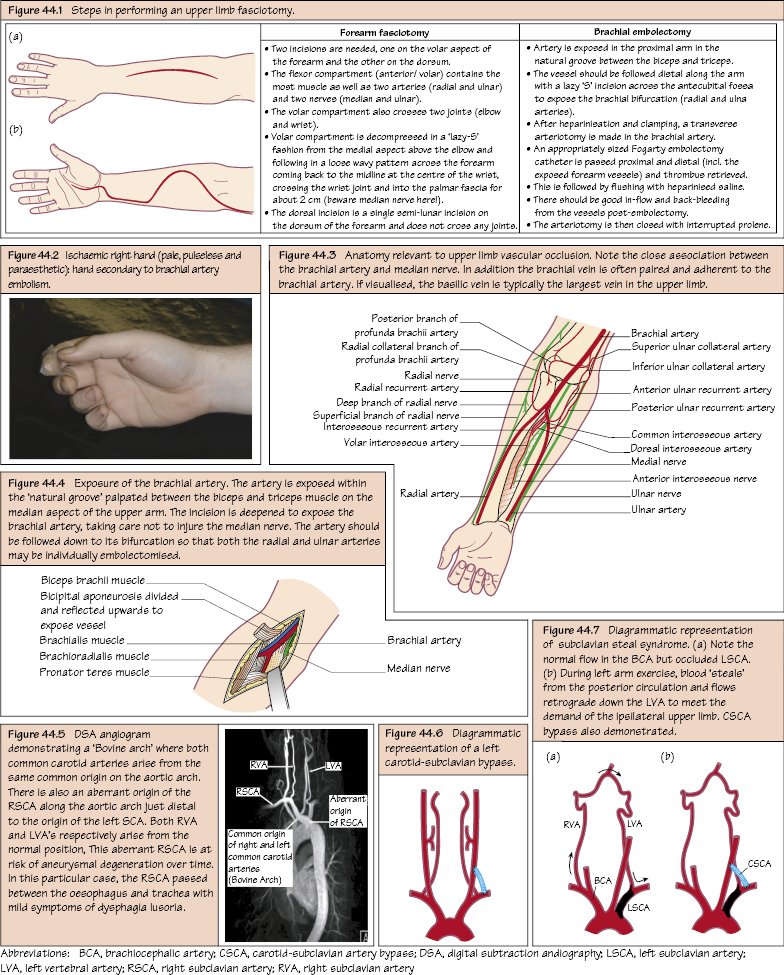Upper Limb Vascular Disease The upper limb is resistant to ischaemia partly because of the generous collateral supply around the shoulder girdle and the collateral-rich profunda brachii branching very proximal from the brachial artery in the upper arm. The most commonly affected vessel is the SCA, but more distal vessels may also be involved (especially in diabetes and chronic renal failure). Asymptomatic arterial occlusion does not require treatment (e.g. absent radial pulse found on routine examination). Symptomatic disease often presents as arm fatigue or forearm claudication on exercise (e.g. arms working above shoulder level) that is well tolerated, and treatment is only indicated if affecting work or lifestyle. Critical ischaemia is rare. Treatment includes BMT, balloon angioplasty, stenting, open bypass (e.g. carotid-subclavian bypass, SCA-axillary bypass).

Aetiology of Upper Limb Vascular Disease
Upper Limb Atherosclerosis
Subclavian Steal Syndrome
Stay updated, free articles. Join our Telegram channel

Full access? Get Clinical Tree


